
Everything in this slideshow
-
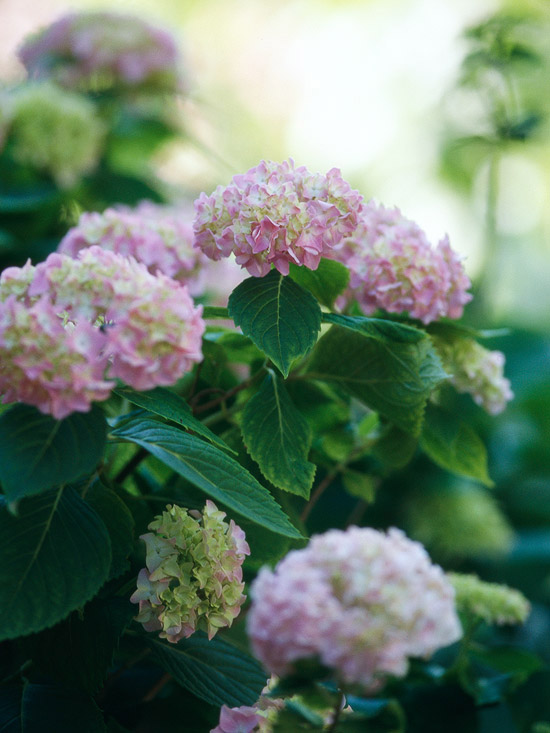
Hydrangea
One of the most common questions we’re asked is how to get hydrangeas to bloom. Common causes for these beautiful shrubs to act stubborn include:
— They’re grown in too much shade.
— They are pruned at the wrong time of year.
— Their flowers were frozen in winter or zapped by a late on spring frost.- Learn more about caring for hydrangeas.
- Learn more about growing trees and shrubs.
-
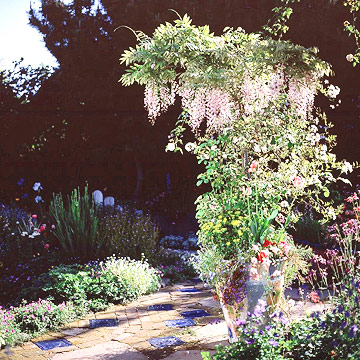
Wisteria
The queen of flowering vines, wisteria offers gorgeous flowers, wonderful fragrance, and quick growth. Like hydrangeas, though, wisteria can be a shy bloomer for a handful of reasons.
— They get too much fertilizer (it causes them to put all their energy into leafy growth).
— They are pruned improperly (cut them back in early summer after they finish flowering).
— Their flowers were frozen in winter or zapped by a late spring frost.Also: Check the variety. If it was grown from seed, it’ll take a lot longer to bloom than if it’s a named variety that’s been grafted.
- Learn more about wisteria.
-
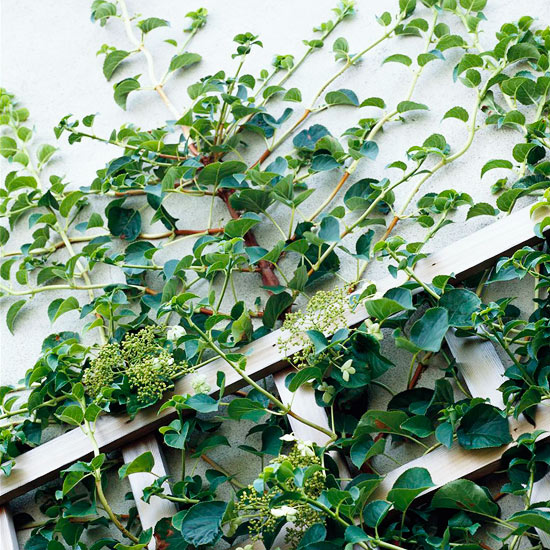
Climbing Hydrangea
A full-grown climbing hydrangea full of blooms inspires awe and brightens shady walls. But this beauty has a reputation for being a little slow to get started. The remedy? Patience, we’re afraid. Give it a few years to get settled — it’ll be worth the wait!
- Learn more about climbing hydrangeas.
-
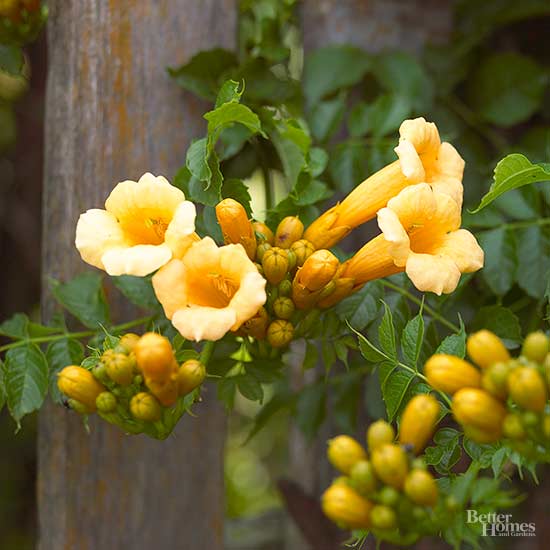
Trumpet Vine
This fast grower is almost a sure bet for attracting hummingbirds to the garden while clothing walls and other structures in a blanket of rich green leaves. Here are some hints for getting yours to bloom.
— Be patient. Like wisteria, seed-grown vines can take up to 10 years to bloom for the first time.
— Give it plenty of sun — trumpet vine loves to bask in the light.
— Don’t fertilize. Too much nitrogen in the soil will make it grow all leaves and no flowers. -
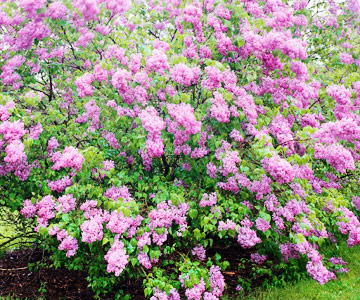
Lilac
Who doesn’t love lilac’s fragrant flowers? If your shrubs look great but don’t reward you with blooms, try these tips.
— Make sure it’s in full sun. Lilacs need lots of light to produce those blossoms.
— Prune in early summer — cut them back at any other time and you could be removing the flowers before they open.
— Check if the variety is suited to your area. Some lilacs won’t grow or bloom well in the South.- Learn more about lilacs.
-
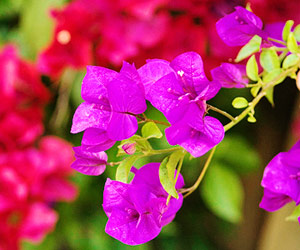
Bougainvillea
Northerners love their lilacs, and Southerners boast about their bougainvilleas. Are your vines shy to bloom? Here are some common reasons why.
— Bougainvilleas are sun worshippers — so make sure they get a spot in full, hot sun.
— Don’t love them too much; if they get more food or water than they need in winter, you’ll get a spectacular crop of leaves. And that’s it.
— Do give them a balanced fertilizer in spring and summer — they need some nutrients during their spring and summer growing season.- Learn more about bougainvillea.
-
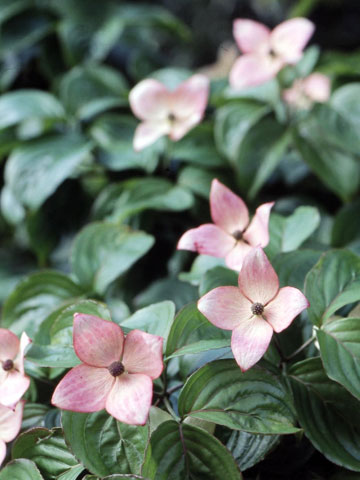
Dogwood
Lovely dogwoods light up yards in spring with their beautiful blooms. Here’s why your trees may not be putting on the quite the display you expected.
— Like people, dogwoods have a lifespan. After 35-40 years, they tend to stop flowering well. And if your trees are just a couple of years old, they may not be mature enough to bloom.
— Insects and disease stress the tree and can prevent it from flowering. Watch for spotted leaves, wilted shoots, or holes in the bark as signs of trouble.
— Even though dogwoods are understory trees, they do need some light to bloom. If yours is in deep shade, you may need to move it to a brighter spot in order to get flowers.- Learn more about dogwood.
-
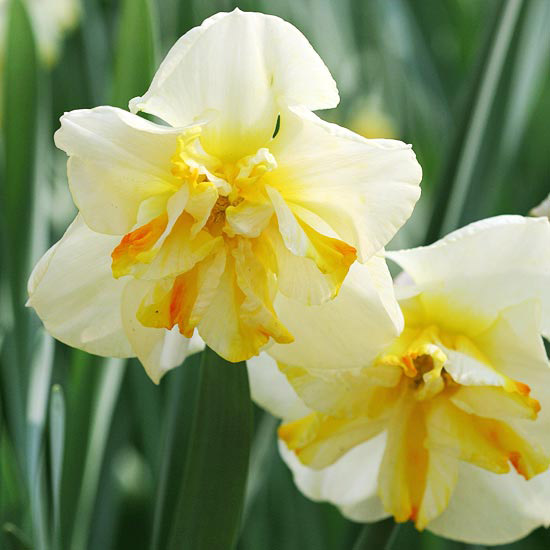
Daffodil
A sure sign of spring, daffodils add easy-care color to the garden. Here are some reasons why your bulbs may not be adding cheer to your yard.
— Daffodil leaves absorb energy for next year’s blooms. Grow yours in a bright spot and don’t cut the foliage back until it turns yellow on its own.
— If the bulbs stay too wet for too long, they’ll start to rot. First they’ll stop flowering, then the bulbs may die.
— Older clumps of daffodils may be crowding each other out. Dig them in summer and divide them so there’s at least 6 inches between each bulb.- Learn more about daffodils.
-
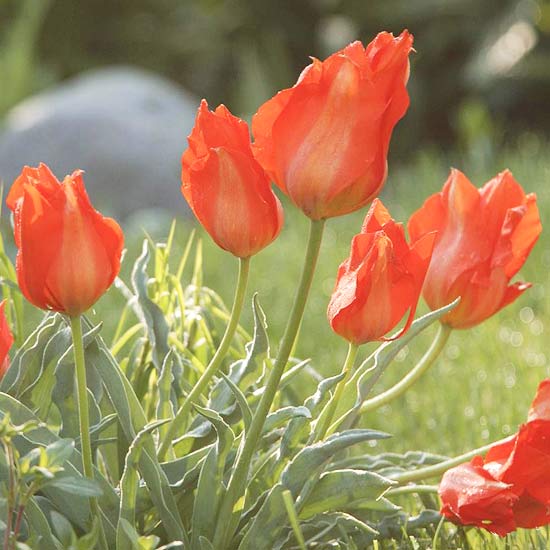
Tulip
Tulips come in just about every color and are a perfect way to put on a big spring show in your landscape. Here’s why your tulips may not be as show-stopping as you’d like.
— Tulips, just like daffodils, start absorbing energy for next year’s flowers when they’re done blooming. Grow them in a bright spot and don’t cut the foliage back until it turns yellow.
— Most hybrid tulips have a short life — they bloom well only for two or three years before the bulbs exhaust themselves. Select good perennializers for your climate or choose species tulips, which come back more reliably.
— Deer and rabbits love tulip blooms and often eat the flower right off the stem while it’s still in bud stage. Protect yours from hungry critters with sprays or fencing.- Learn more about tulips.
-
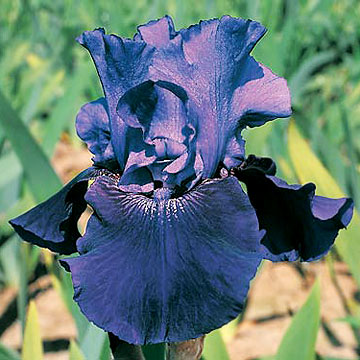
Iris
Tall bearded irises, with their jewel-tone colors and wonderful fragrances are definite garden winners. If your irises aren’t rewarding you, here are some possible reasons why.
— Bearded irises don’t like to be planted too deeply; if they are, they may grow a crop of nice leaves but no flowers.
— Most irises do best in full sun — if they get too much shade, they won’t have the energy to produce their beautiful blossoms.
— Like daffodils, the plants can get crowded over time. If they’re too tight, they won’t bloom. Divide them in midsummer to revitalize them.- Learn more about irises.
-
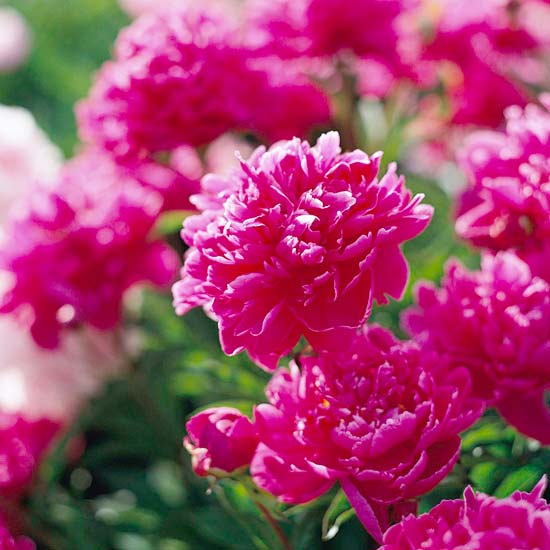
Peony
Pretty peonies, with their opulent flowers, rich colors, and heavenly fragrances are among the easiest of all perennials to grow. Here are some of the reasons that they get fussy.
— Peonies don’t like to be planted too deeply; the crown (where the roots meet the shoots) should be just at or just an inch below ground level.
— Just like so many other plants, they do best in full sun — so make sure yours get plenty of bright light.
— Peonies hate being disturbed — so if you need to transplant or divide them, they may punish you by not blooming for a year or two. Be patient while they get settled.- Learn more about peonies.
-
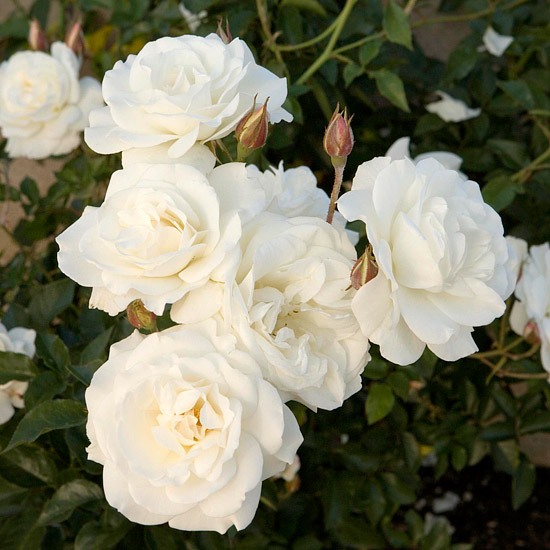
Rose
Roses lend elegance to any garden they’re in. But these beauties aren’t usually so chic when they’re not flowering. Here are reasons why yours may be giving you trouble.
— Give them full sun — while some roses tolerate shade better than others, no rose truly likes a less-than-bright spot.
— Many hybrid roses are grown on another rose’s roots. If the hybrid rose dies, the root plant takes over. And these root plants aren’t usually good bloomers. It’s best to replace it.
— Diseases can stress roses to the point where they won’t bloom. If you see yellow, brown, or black spots or other ominous symptoms, try treating your roses to get them in better health.- Learn more about roses.
-
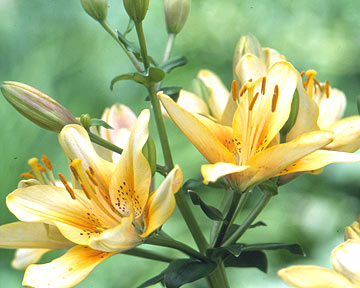
Lily
An easy-care bloomer and beautiful cut flower, lily is the perfect plant to brighten up the summer garden. Here’s why you may have troubles getting yours to bloom.
— Lilies flower only once a year. If you purchased a plant that was forced into bloom in spring, you’ll need to wait until next summer before it puts on another show.
— They need to keep their foliage all season in order to produce next year’s flowers. If you cut them too far back, they won’t gather enough energy for flowers.
— If your lilies have formed colonies and they’re too crowded, they may not produce flowers. Dig them up and divide them to encourage them to bloom again.- Learn more about lilies.
-
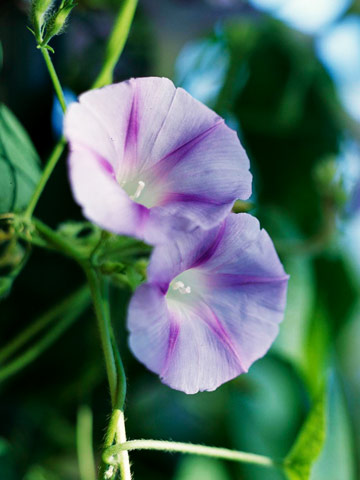
Morning Glory
This quick-growing vine is usually a cinch to grow and beautifully covered in blue, pink, or white flowers. But they can be annoying when they’re not producing their beautiful blooms. Here are some reasons why.
— Like other vines, soil that’s too rich can encourage them to put on all leafy growth at the expense of flowers.
— Morning glories need full sun in order to grow and bloom well. They dislike shade.
— They can take a couple of months to bloom if you grow them from seed. You may need to be patient — or start them early indoors if you live in a short-summer area.- Learn more about morning glories.
-
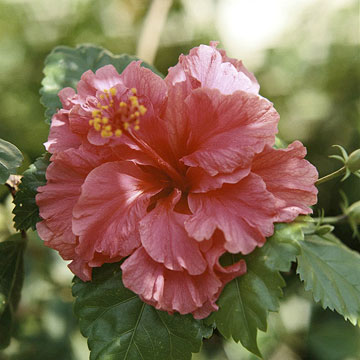
Hibiscus
Beautiful hibiscus, with its big, colorful flowers is a showpiece. Here are some reasons why yours may be without those gorgeous blooms.
— Tropical hibiscus loves full sun — make sure yours gets plenty of light so it has the energy to produce the flowers.
— Be careful about pruning. Hibiscus blooms on new growth, so if you prune too hard or too often, there won’t be young branches for it to bear flowers on.
— Hibiscus can be a heavy feeder — so unless you have rich soil, you may need to fertilize regularly with a general-purpose plant food, especially if it’s growing in a pot.- Learn more about hibiscus.
-

SOURCE:http://www.bhg.com/gardening/trees-shrubs-vines/shrubs/why-wont-it-bloom/